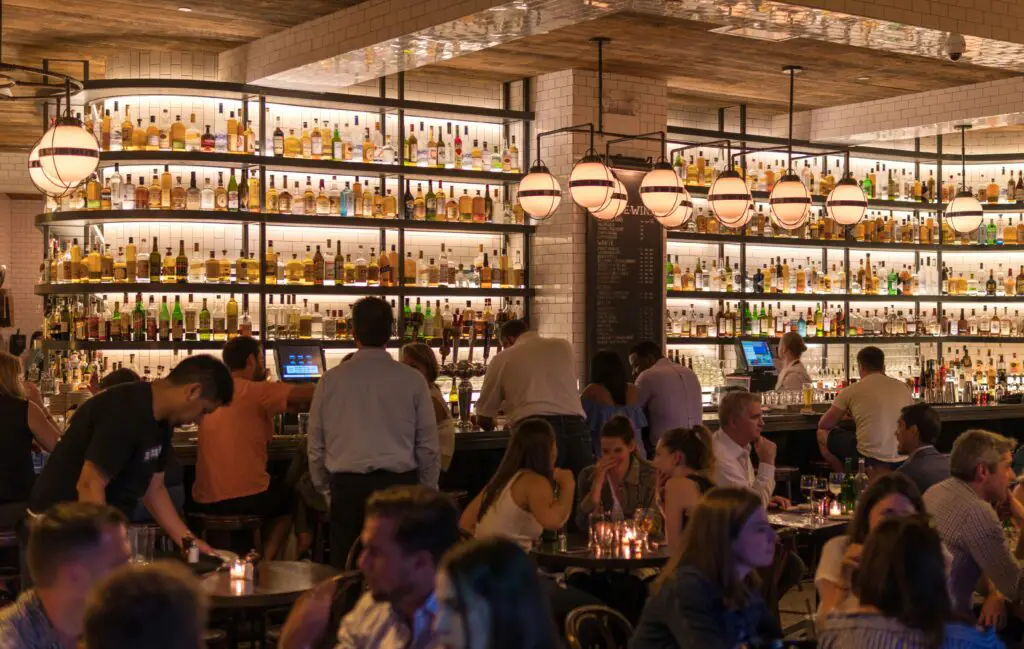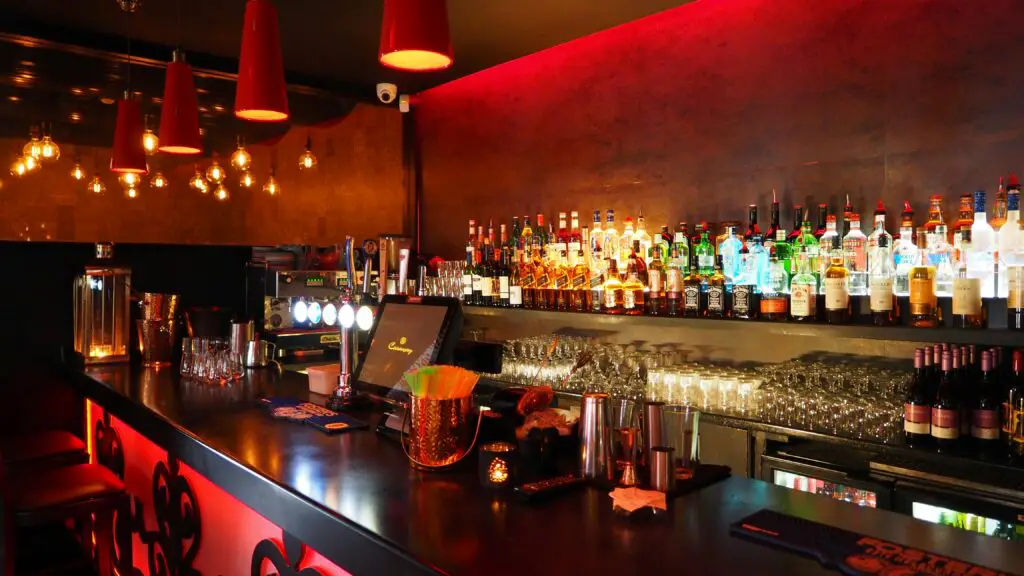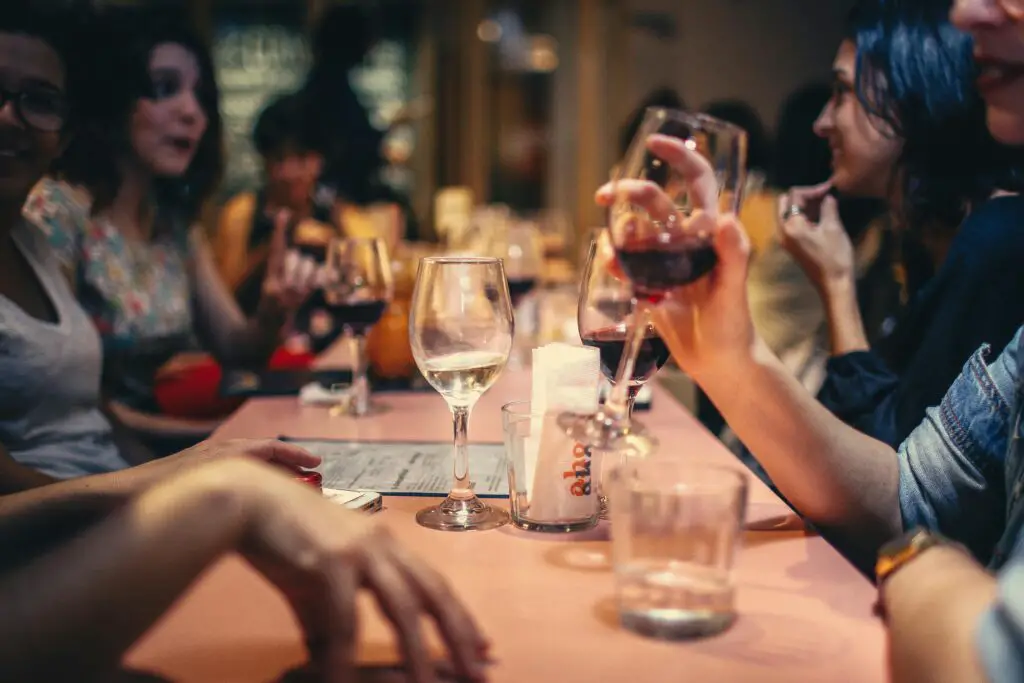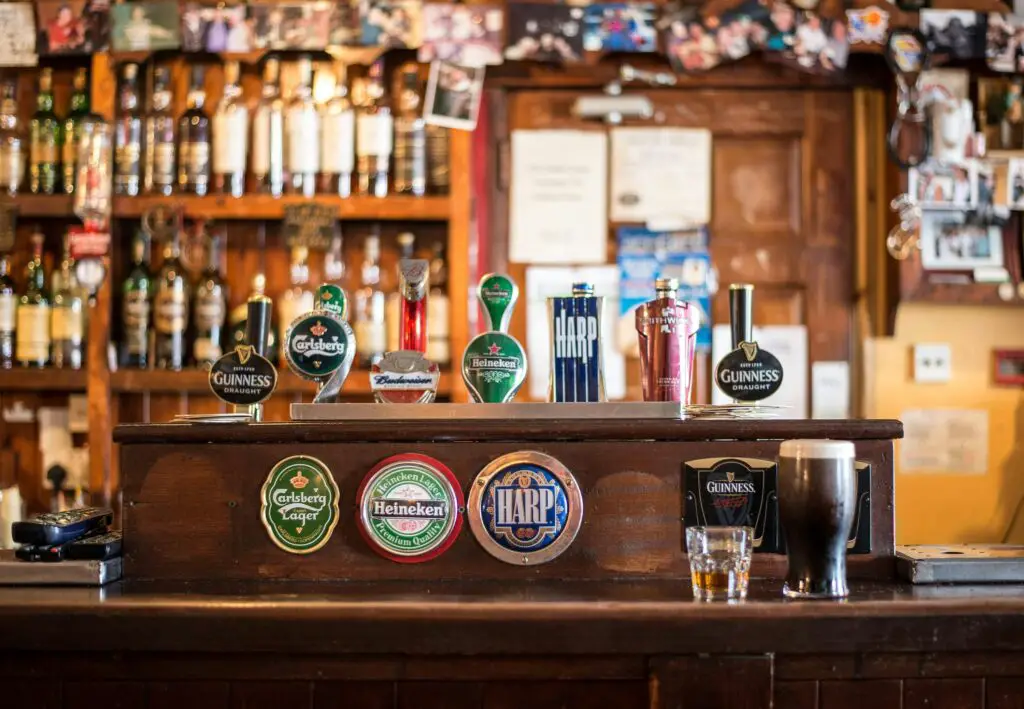The Ultimate 2025 Guide to Types of Bars
Table of Contents:
- Introduction
- Why Knowing Bar Types Matters in 2025
- Top 12 Types of Bars Explained
- Cocktail Bars
- Dive Bars
- Sports Bars
- Wine Bars
- Rooftop Bars
- Speakeasies
- Themed Bars
- Pub-Style Bars
- Karaoke Bars
- LGBTQ+ Bars
- Hotel Bars
- Microbrewery Taprooms
- Trends Shaping Bars in 2025
- Real-World Examples
- Choosing the Right Bar Concept
- Frequently Asked Questions
- Final Thoughts
Introduction
The hospitality industry is evolving fast, and so are its experiences. Whether you’re a bar owner, investor, bartender, or just a social explorer, understanding the types of bars in 2025 helps you make better choices—be it starting your own business or selecting where to spend your Friday night.
In this guide, we’ll explore the most popular bar concepts of 2025, discuss their audience appeal, and help you identify which bar type fits your needs, brand, or lifestyle.
Why Knowing Bar Types Matters in 2025
The bar you choose—or design—isn’t just about drinks. It’s about the ambience, target demographic, music, pricing, service model, and even glassware. With changing consumer expectations, especially among Gen Z and Millennial audiences, bar owners must get creative and purposeful.
A casual dive bar won’t work for a luxury-minded clientele, while a rooftop lounge might feel too formal for a group watching the big game. Knowing the difference is key.
Each type of bar sets the tone for what customers expect. For example, people visiting a speakeasy expect exclusivity, dim lighting, and handcrafted drinks. Meanwhile, a sports bar attracts loud crowds cheering over beer and wings.
Top 12 Types of Bars Explained

- Cocktail Bars
Sleek, upscale, and focused on mixology. Ideal for guests who appreciate craft cocktails, creative presentations, and a curated menu. Cocktail bars often emphasize ambiance with mood lighting, intimate seating, and bartenders trained in classic and modern techniques. They are popular among young professionals, couples on dates, and tourists seeking a memorable experience. - Dive Bars
The charm lies in the grit. Budget-friendly, local vibe, often filled with regulars. Expect old-school music, dim lights, and no-frills drinks. Dive bars often develop a cult following, especially in urban neighborhoods. While the setting is humble, many patrons consider these places hidden gems. - Sports Bars
Loaded with screens, loud energy, and beer towers. Perfect for big games, wings, and group hangouts. Sports bars are designed for watching live games with commentary, with booths or bar stools offering a full view of the screen. Some also integrate digital gaming or fantasy leagues. - Wine Bars
Quiet, sophisticated, and often paired with cheese boards or tapas. Great for dates, conversations, or solo unwinding. Wine bars usually cater to a more refined crowd and may even offer sommelier recommendations. Many host tasting events or food and wine pairing evenings. - Rooftop Bars
Cityscape views and a stylish crowd. These venues are becoming must-haves in urban hospitality design. Ideal for Instagram moments and sunset cocktails, rooftop bars offer a premium experience. Some incorporate DJs, lounge areas, and private cabanas. - Speakeasies
Hidden entrances, vintage décor, and a 1920s vibe. Customers come for exclusivity and mystery. These bars are designed to feel secretive, often accessed through bookcases, phone booths, or unmarked doors. They are a hotspot for classic cocktails and jazz music. - Themed Bars
Tiki, sci-fi, horror, Harry Potter—you name it. Atmosphere-driven with décor and drinks to match. Themed bars thrive on immersive environments and loyal fan communities. A successful themed bar invests in both decoration and entertainment, from costumes to curated playlists. - Pub-Style Bars
Inspired by British or Irish traditions. Think comfort food, ales, and a friendly, neighborhood feel. Pubs often double as casual dining spots with rustic interiors, trivia nights, and live folk music. They’re community-driven and cater to a wide age range. - Karaoke Bars
Energetic, interactive, and music-focused. Popular in group party scenes or cultural enclaves. These bars vary from small-room setups to stage performances. Drinks are often secondary to the singing experience, and theme nights (e.g., 90s hits) are common. - LGBTQ+ Bars
Safe, inclusive, and community-focused. Often host drag shows, pride events, or themed nights. LGBTQ+ bars play a vital role in community connection and activism. They may specialize in gender-neutral facilities and inclusive staff training. - Hotel Bars
Designed for travelers and professionals. Mix of locals and guests. Often quiet with premium selections. Hotel bars are ideal for business meetups or solo travelers. High-end options may offer signature drinks themed to the hotel’s concept. - Microbrewery Taprooms
Craft beer on tap, brewed in-house. A hub for beer lovers and social conversations. Taprooms often provide brewery tours, beer flights, and exclusive seasonal brews. They’re usually casual but with a focus on product storytelling.
Trends Shaping Bars in 2025

AI-Driven Menus
Smart drink suggestions powered by customer behavior data and taste preferences. These help first-time visitors navigate extensive drink lists.
Zero-Proof Cocktails
The rise of health-conscious consumers has made alcohol-free options more desirable. Non-alcoholic spirits, botanical infusions, and adaptogens are becoming mainstream.
Experiential Design
Bars are being designed for storytelling and sensory immersion. Walls may feature projection mapping, and menus come with interactive elements.
Sustainability
From reusable straws to locally sourced ingredients, sustainability is a priority. Some bars even recycle their glass bottles into décor or coasters.
Real-World Examples
When I visited a speakeasy in Dubai last year, I had to enter through a vintage refrigerator in a fake kitchen setup. That hidden element added so much excitement—it wasn’t just about what I drank, but the story I’d take home. The bartender explained how every cocktail was named after a city from the Prohibition era, complete with a backstory.
Similarly, a microbrewery in Bangalore had beer-themed trivia nights that turned first-time visitors into loyal fans. They paired each round of trivia with a different house brew, making it fun and educational.
Another standout was a themed Harry Potter bar in Manila. Every cocktail was served with smoke, color-changing effects, and wand-shaped stirrers. The bar staff even wore wizard robes, and the bathrooms were labeled “Muggle” and “Wizard.”
Choosing the Right Bar Concept
Know Your Audience
Gen Z prefers immersive, TikTok-worthy spaces like themed bars and rooftop lounges. Millennials lean toward cocktail bars and wine experiences. Gen X and older groups still prefer pubs and hotel bars for their comfort and familiarity.
Location is Everything
Bars in college towns thrive as dive or sports bars. In luxury business districts, cocktail lounges and hotel bars flourish. Rooftop bars are best suited to metropolitan cities with skyline views.
Cost of Setup
Some bars, like dive bars or sports bars, require lower investment. Speakeasies, themed bars, and rooftop venues often need higher budgets for construction, décor, and licensing.
Staff Skillset
A cocktail bar needs experienced mixologists. A karaoke bar can function well with enthusiastic staff who can hype up the crowd. Pubs need kitchen coordination, and LGBTQ+ bars require inclusivity training.
Introduction
In the world of bartending, presentation is everything. The same drink can look—and taste—completely different depending on the glass it’s served in. In 2025, with social media influencing beverage aesthetics more than ever, the choice of glassware is not just functional—it’s part of the brand.
Types of Bars Glass
The shape of the glass affects everything from aroma to temperature retention. Customers expect a consistent, elevated experience, and unique glassware can be a signature of your bar. As experiential design becomes more prominent, bars are investing in creative and functional glassware to leave a lasting impression.
Most Common Types of Bar Glasses
- Highball Glass Tall and slim, this glass is used for mixed drinks like gin and tonic, rum and coke, or whiskey soda. It allows carbonation to last longer and keeps drinks refreshing.
- Lowball (Old-Fashioned) Glass Short and wide, perfect for strong spirits served over ice such as whiskey neat or classic Old Fashioned cocktails.
- Collins Glass Similar to a highball but taller. Used for cocktails that require more mixer or volume—like Tom Collins or mojitos.
- Martini Glass Iconic V-shape for elegance and surface area. Used for martinis, cosmopolitans, and other shaken or stirred drinks without ice.
- Margarita Glass Wide rim for salt or sugar garnish. Ideal for frozen or shaken margaritas and daiquiris.
- Wine Glasses (Red & White) Red wine glasses are rounder and larger for better oxidation. White wine glasses are narrower to maintain chill and aroma.
- Champagne Flute Tall and narrow to preserve carbonation and enhance visual appeal for sparkling wines and mimosas.
- Beer Glasses
- Pint Glass: Most common; for lagers and ales.
- Beer Mug: Thicker walls and a handle; retains temperature.
- Tulip Glass: Bulb shape for aromatic beers like IPAs.
- Pilsner Glass: Tall and narrow; enhances clarity and bubbles.
- Shot Glass Used for serving straight shots of spirits like tequila or vodka. Also used in layered shooters.
- Coupe Glass Rounded and shallow, ideal for vintage-style cocktails and sparkling drinks. Often used as a martini glass alternative.
- Rocks Glass Similar to a lowball, used for spirits served with ice. More robust and great for muddled cocktails like caipirinhas.
- Snifter Used for aged spirits like brandy and cognac. Wide bottom and narrow top to trap aromas.
Trends in Glassware for 2025


- Colored or tinted glass for aesthetic appeal
- Etched branding on base or rim
- Sustainable materials like recycled glass
- Modular or stackable designs for efficient bar storage
- The rise of signature glass shapes for bar branding
Examples
A cocktail bar in Tokyo gained international attention for serving smoked cocktails in bell jar-style glasses. Meanwhile, an eco-conscious bar in Berlin uses bamboo-based glassware for their zero-proof cocktails.
Choosing the Right Glass for Your Bar
- Match glassware to your drink menu
- Consider your bar’s storage and dishwashing capabilities
- Factor in durability vs. aesthetics
- Choose glassware that fits your brand vibe (luxury, casual, themed)
Frequently Asked Questions
What’s the difference between a pub and a bar?
Pubs focus more on food and have a traditional, communal feel. Bars often focus on drinks, entertainment, and ambiance.
What is a speakeasy bar?
A speakeasy is a hidden or disguised bar inspired by the American Prohibition era. It features vintage themes and exclusive entry.
Are rooftop bars only in big cities?
Mostly yes, because they rely on elevated views and urban atmospheres. However, some tourist resorts in remote areas also offer scenic rooftop bars.
What bar type is best for casual gatherings?
Dive bars, pubs, or sports bars offer relaxed environments perfect for groups, birthdays, or happy hours.
Can I use the same glass for all cocktails?
Technically yes, but not advisable. Presentation and drink integrity are compromised without proper glassware.
What’s the most versatile glass?
A highball or rocks glass is versatile for most basic drinks.
Are plastic alternatives acceptable?
In outdoor settings or high-volume events, yes. But glass remains the gold standard for quality presentation.
Final Thoughts
In 2025, the bar you walk into says a lot about what you’re looking for: connection, luxury, fun, nostalgia, or comfort. Whether you’re building a brand or just exploring nightlife, knowing the different types of bars will help you create—or find—the perfect vibe.
Bar type defines guest expectations, vibe, and revenue model. The trendiest concepts today are speakeasies, rooftop lounges, and zero-proof bars. A successful bar goes beyond drinks—it creates memories, community, and identity.
You can also read : General Service Rules for Waiters: Professional Standards in Hospitality

